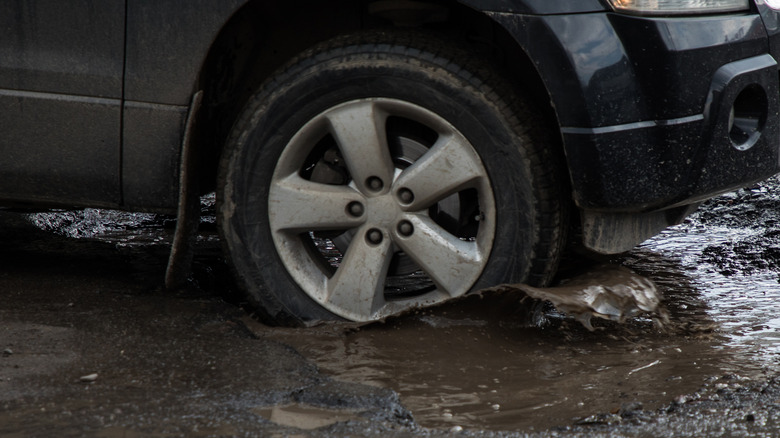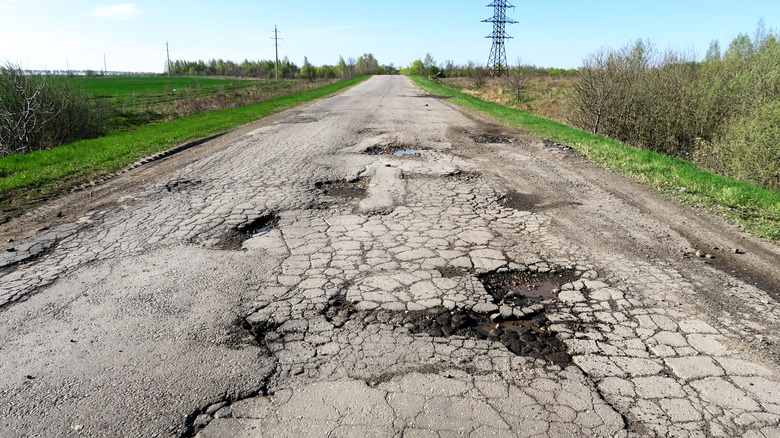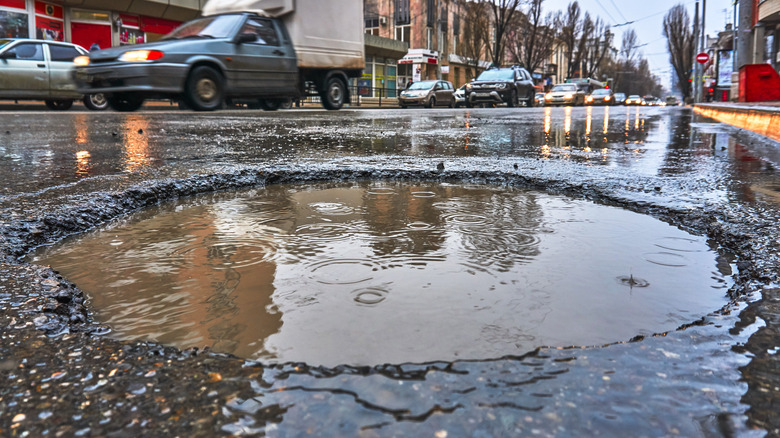Where Do Potholes Come From?
Around the U.S., and especially in the northern states, it's pretty well known among drivers that there are two seasons on the roads: winter and road construction seasons. As the weather starts to warm up, it's certainly not uncommon to see road crews all around the United States redirecting traffic while they get busy fixing a bunch of potholes.
According to a factsheet from the American Public Works Association, the term pothole actually dates back to pottery makers in the 15th and 16th centuries – a time well before 16-wheelers roared over paved roads. These potters would take advantage of the divots, which the wagons and coach wheels made, by digging further into the ruts to get the clay deposits underneath the surface. They would then use that clay to make their assortment of pottery. The wagon drivers, noticing what these resourceful craftspeople were doing, then decided to call the divots created by their wheels "potholes."
When and how potholes are repaired
If there are small potholes on a road near you and it seems like there are no immediate plans to fix them, there's a reason for that. According to the American Public Works Association, emergency repairs are only done if a pothole is deemed to significantly hinder traffic patterns. In other words, if a particular pothole causes multiple collisions because drivers are swerving out of the way, local officials would deem it necessary to get that hole fixed right away. Another cause for emergency repair would be if a pothole is so large, it causes traffic to slow down as drivers approach the pothole.
When it comes to repairing a pothole there are typically four main methods that road construction services employ. One solution is to take patching materials and throw them into the hole, followed by a compacting process. Another option has them remove water and debris from the pothole before filling it with tack oil and a heated asphalt mix. A third method is to blow asphalt and aggregate (a composite of minerals such as gravel) into the hole and then add some more aggregate to the top. And, the fourth option is similar to the first option, except after the material is thrown in to fill the pothole it is then covered with a layer of asphalt tack material.
How potholes form
A pothole begins to form when groundwater gets into and underneath the pavement, as Ohio's Summit County explains. The problems start to arise once the water freezes. Because water expands when it freezes, it causes the pavement to expand, bend and crack, which in turn causes the road material to weaken. Then as temperatures warm up and the ice begins to melt, the pavement will contract and start to leave gaps in areas under the surface. Then, the process repeats itself. Water gets in, it freezes and expands, and causes the pavement to bend and crack some more.
The Summit County further adds that the weight of vehicles continuing to drive over that weakened pavement, causes pieces of the roadway to break off, and that creates the pothole. In addition, when it comes time to put salt on the road, it actually makes this natural process of pothole formation much worse, which can create even more of these annoying little (or sometimes ginormous) tarmac craters.


